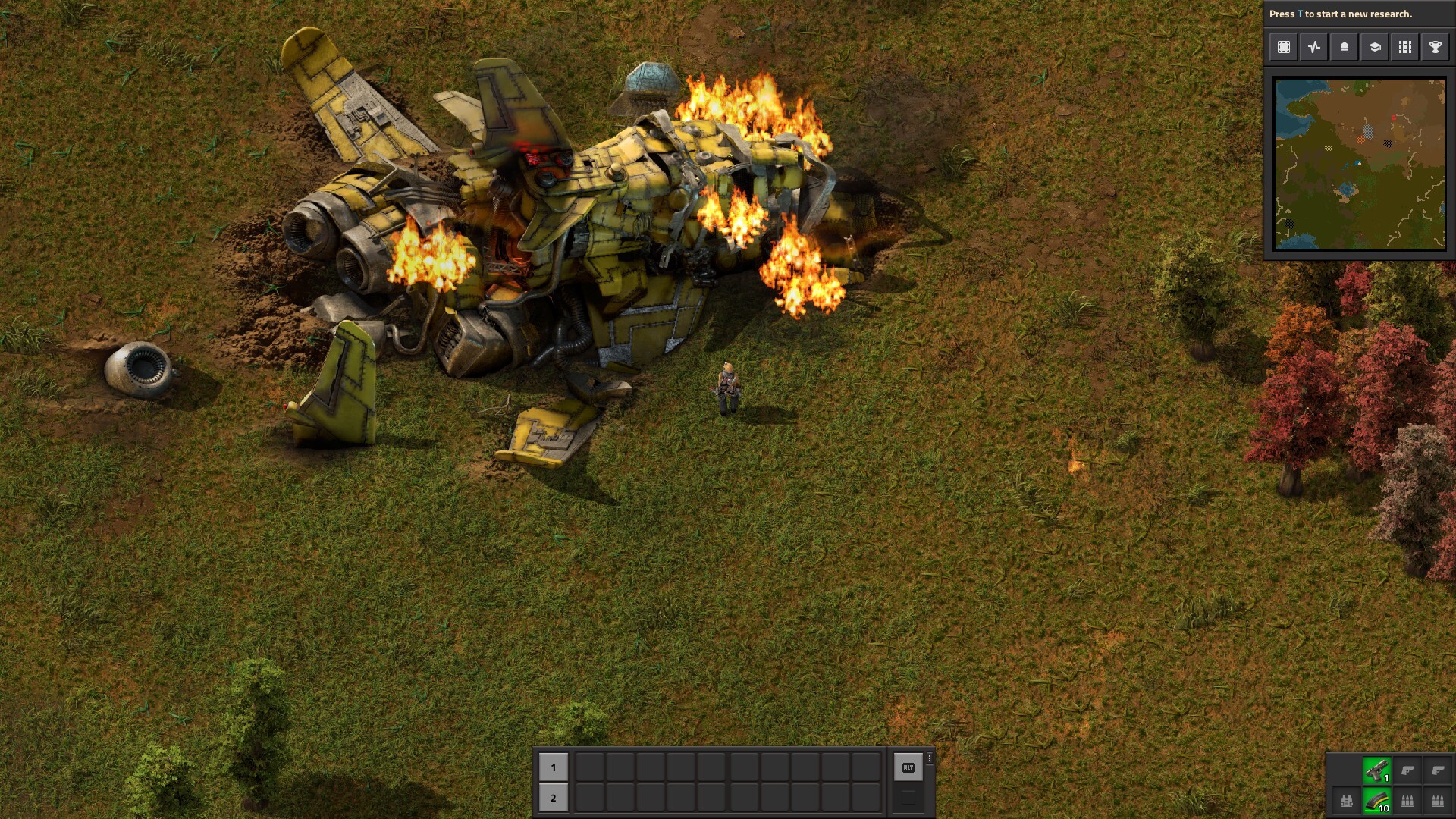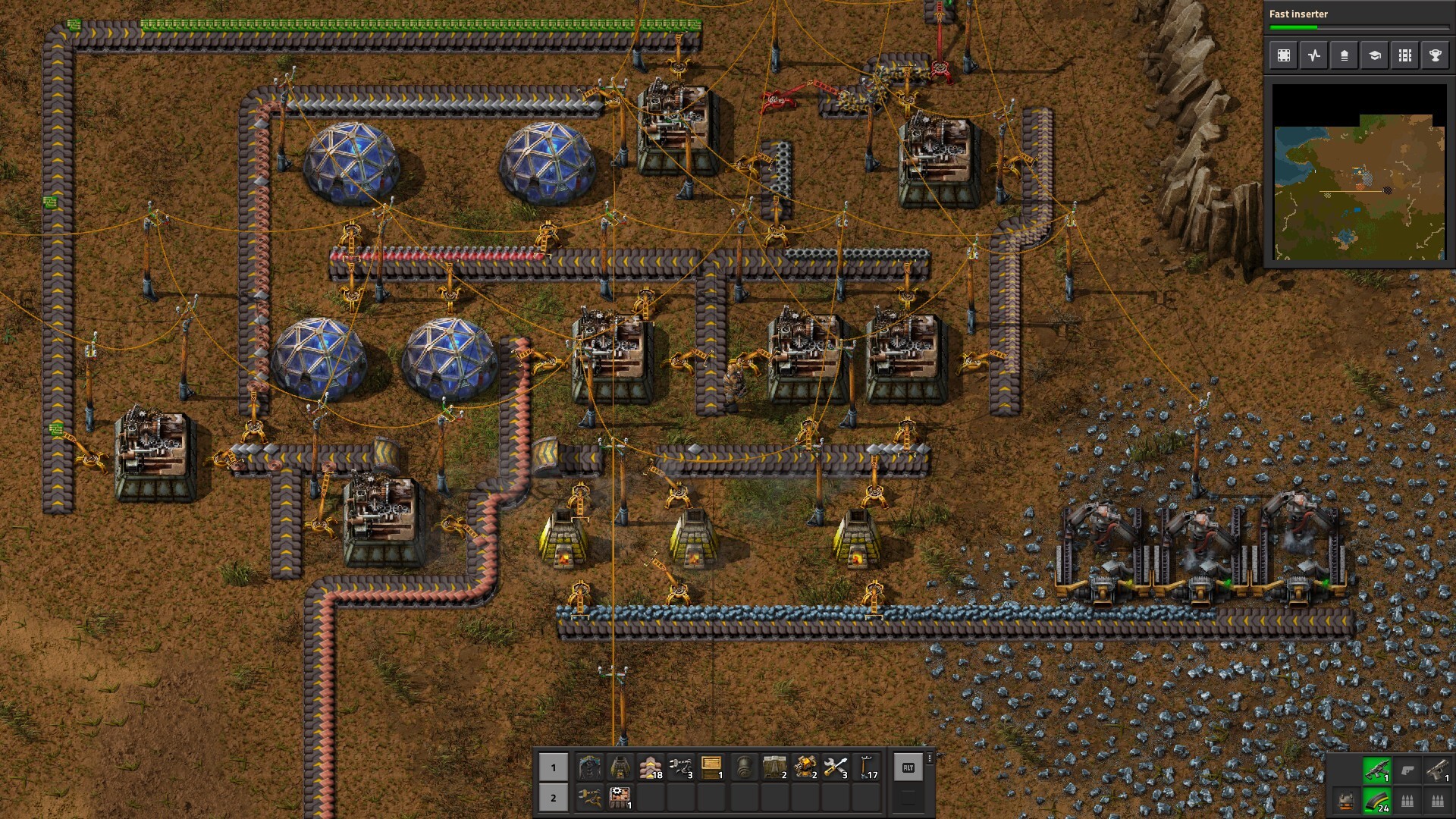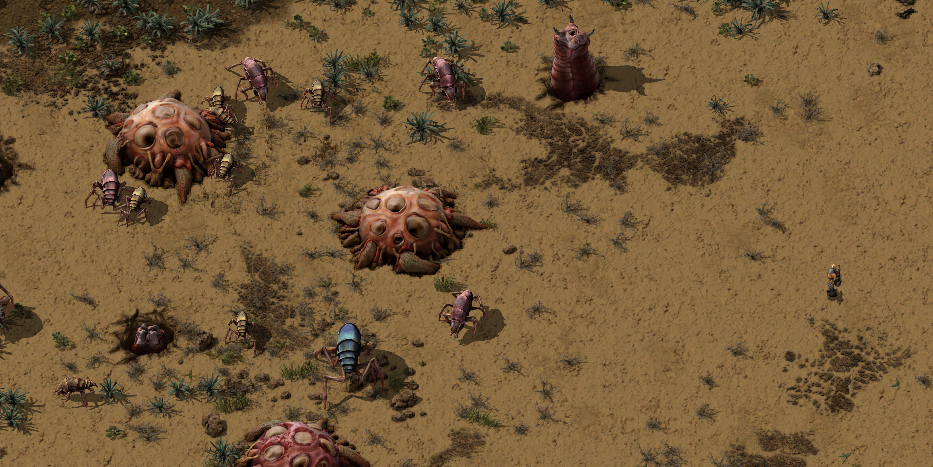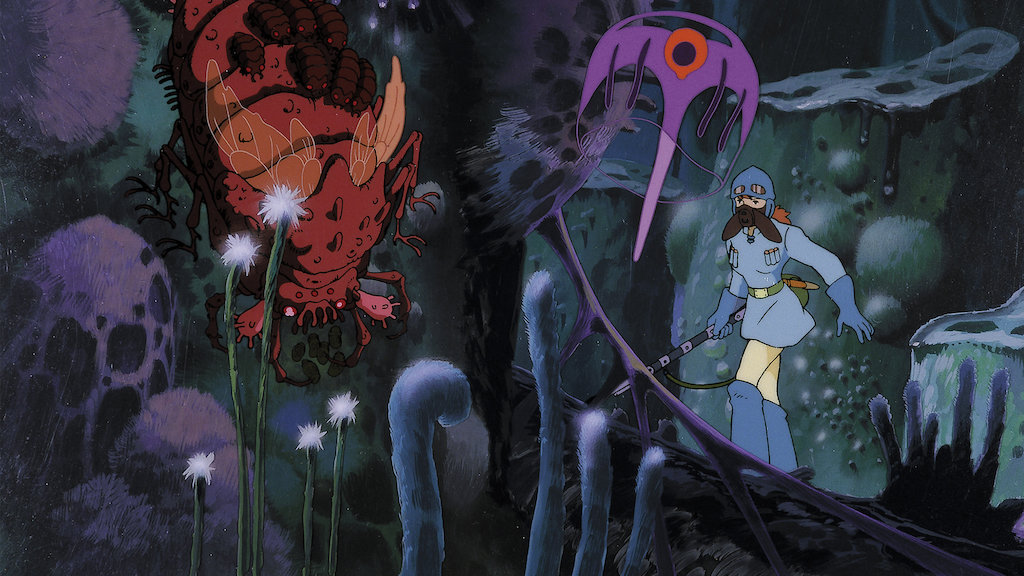To call Minecraft the game of the last decade is, if anything, an understatement. Through its sublime combination of an endless box of Lego with a survival game in a procgen world, it has birthed multiple new genres. There are broadly similar games, like Terraria and Starbound, as well as games that tip the mix more towards survival – Don’t Starve – or construction – the subject of this review, Wube Software’s Factorio.
The basis of Factorio can be found in two areas of Minecraft’s gameplay: crafting items from raw materials and automating extraction with minecarts and redstone. Factorio takes these elements up to eleven and builds a whole game around them, with a bit of the survival aspect thrown in for flavour. Other aspects of the game, such as its top-down perspective and elaborate tech tree, originate in the RTS genre.
At the beginning of the game, you find yourself in the workboots of a lone engineer whose spaceship has just crashed on a sufficiently Earth-like planet. Armed with a pickaxe, you dig up your first resources from a Command & Conquer-style resource field. You dig up stone and craft a furnace. You dig up coal to light the furnace. Then you dig up iron and bronze ore to smelt into ingots plates, from which more sophisticated items can be crafted. The first such item you’ll craft is not an iron pickaxe, but an automatic mining machine, powered by coal.
Machines can feed items into other machines, so you can place a furnace directly in front of your miner, and it will automatically smelt ore as it’s mined. To power both the miner and the furnace, you build a second miner in the nearest coal field and then two types of items which define Factorio’s early game: the grabbing arm and the conveyor belt. A line of conveyor belts takes coal past your furnace and miner, and two grabbing arms (also coal-powered) deposit this fuel in each. This is the start of your factory, destined to build a rocket that can launch a satellite into space.

Ever crashed so badly that you needed to reinvent spaceflight?
But before you can build a spaceship, you must first recreate the industrial revolution by building a steam engine. Using the resources gathered by your coal-powered miners, you build an off-shore pump. You place the pump on the closest body of water and attach it to a boiler and the boiler to a steam engine. You extend your coal line to the boiler, and now you have electricity, with which to power faster electric miners and grabbing arms.
At this stage, you can also power glass domes called labs, which allow you to research new items to build. Research is done by consuming beakers of different colours, the production of which will provide the major impetus for expanding your factory. The first type of beaker, red, must be crafted from copper plates and iron gear wheels, which are in turn crafted from iron plates. You create your first few manually, after collecting copper and iron from your furnaces, and deposit them in the lab to start researching.
Likely the first item you’ll research will be the assembler factory, which automates your inventory-bound crafting in the same way that the miners automate your pickaxe swinging. The catch is that while your engineer is happy to fashion iron plates into gear wheels as an intermediate step towards crafting red beakers, automated assemblers are not. You must create an assembler to build gear wheels out of iron plates, and then a second assembler to take in those gear wheels, along with copper plates, and craft red beakers. Only then can your labs mainline the good stuff.

The less your factory looks like this, the better you’re doing.
While red beakers are quite simple to craft, the green beakers you’ll need for more advanced research require conveyor belts and grabbing arms, which themselves require a host of intermediate products, such as circuit boards, which come with their own intermediate requirements in turn. Before you know it, your factory will be tangled mess of criss-crossing conveyor belts, electric wires and assembly machines. In the early game, you’ll probably tear the whole thing down a few times and redesign it. That is, if the aliens don’t beat you to it.
Factorio’s survival element involves defending your factory against attacks from giant insects. Over time, the pollution produced by your factory spreads out over the land, and once it reaches the nests of these creatures, they will follow it to its source and attack whatever they find there. Depending on the random generation of your game world, you might go through long stretches of the early game without encountering any aliens, but on normal settings you’ll probably be attacked quite early. You can head off a few of these attacks with your starter pistol, but as your factory expands, you’ll need to start building defenses. This can also be automated – think assembly machines streaming ammunition to gun turrets.
In appearance, these insectoid enemies are revolting and alien in a way that their pleasant, Earth-like surroundings aren’t. Their nests are festering wounds that jar against the pleasant grasses and trees which surround them; cleaning them out is an aesthetic relief. Factorio pays lip service to the idea that one might have sympathy for these creatures and feel bad about turning their habitats into smoke-blackened scenes out of Hard Times, but it’s kinda superficial considering that to avoid doing so, one would also have to avoid or minimise much of the core gameplay. A visual design that harmonised the aliens with their landscape, something like Nausicaä of the Valley of the Wind, would have made this feel like more of a conscious message.

An alien blight on an Earth-like landscape.

Alien creatures in an alien environment.
Some players have taken on the challenge of living in peace with the alien hordes by pivoting from steam engines to solar power early on, but this makes progress much slower, and still doesn’t eliminate pollution entirely. Still, it does seem to be possible, which speaks the game’s verisimilitude, and there’s a vast wealth of other gameplay to make up for skipping the military aspect.
As you craft ever more sophisticated items and move up the tech tree, new areas of gameplay open up. You can drill for oil and process it into petroleum, kicking off a section of the game where you pipe liquids around just as you move solid items on conveyor belts. When you run out of nearby resource fields, you can create automated train networks for transporting resources over long distances. In the late game, you can even automate away the very building of your factory by creating construction robots.
But much of this is optional. Factorio has a endgame goal, but it’s up to you to decide how you want to get there and which parts of the game you’re interested in playing. One of the first technologies you can research is signal processing, which opens up the possibility of constructing complex circuit networks with intricate if/then logic, but you can ignore this mechanic entirely if it doesn’t interest you. Similarly, if you’re not interested in building rail networks, you can do everything with really long lines of conveyor belts, just so long as you can defend them from the alien hordes. And if you really hate conveyor belts, you can tear them all up and replace them with swarms of logistics robots moving resources between chests.
The joy of Factorio is in designing your own systems and gradually iterating on them as you discover new technologies and learn different nuances of the game’s mechanics. Factorio provides plenty of moments where you figure out something small that makes a big difference to your factory’s productivity: how to use both sides of each conveyor belt; what ratios of different items to craft to keep production running smoothly; how to lay out your resource lines to ensure that your assembly lines are extensible; how to automate your rails system to avoid bottlenecks; and much else besides.
Start playing today, and you will dream of conveyor belts for weeks.
 David Yates.
David Yates.
 Ryan Sheasby said on
0 January 2021:
Ryan Sheasby said on
0 January 2021: